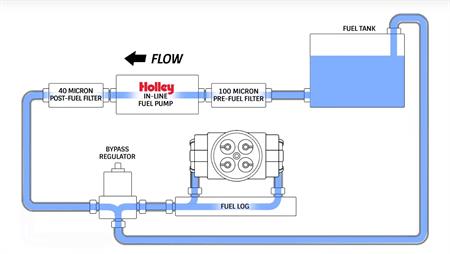The powertrain control module (PCM) sets the diagnostic trouble code (DTC) P0089 when it has determined that the desired and actual fuel pressures do not correlate. This code stands for “Fuel Pressure Regulator Performance.”
Does A Fuel Pressure Regulator Increase Horsepower?
Amateur tuners have the misconception that increasing the fuel pressure by a few psi from the regulator will cause the injectors to receive more fuel, resulting in increased horsepower. In fact, aftermarket fuel pressure regulators are not required; the original equipment manufacturer’s fuel pressure regulator will suffice.
| It is one of the most curious topics of users: | How to check fuel pressure on 5.4 triton |
| After that, the second most searched topic is: | 2005 f150 fuel pressure regulator |
| And with this, another curious topic: | 2005 f150 fuel pressure regulator location |
How Can A Faulty Fuel Pressure Regulator Affect Engine Performance?
Engine misfires, diminished power, sluggish acceleration, and lower fuel economy are all possible outcomes of a defective fuel pressure regulator.
Note: In addition to the information we have provided in our article on 5.4 triton fuel pressure regulator 1 performance, you can access the wikipedia link Here, which is another important source on the subject.
How Do I Fix P0191?
The P0191 code can be fixed by replacing the fuel pump, the fuel pressure regulator, any wires that lead to the fuel pressure sensor that are broken, frayed, or shorted, the corroded connector to the fuel pressure sensor, and any vacuum leaks in the engine.
Where Is Located The Fuel Pressure Regulator?
On mechanical return systems, fuel pressure regulators are typically found at the fuel tank in mechanical return-less fuel delivery systems or at the end of the fuel rail in mechanical return systems.
What Should The Fuel Pressure Be On A 2000 Ford F-150 5.4 L?
1 Response: The specifications for the fuel rail pressure in my service manual range from 28 to 45 psi, with 40 psi being considered normal at idle speed.
What Are Symptoms Of A Faulty Fuel Pressure Regulator?
Engine misfires, decreased power, fuel efficiency, and acceleration are all signs of a bad fuel pressure regulator. Other signs include fuel leaks, black exhaust smoke, the smell of fuel from the dipstick, engine malfunction, and a noisy fuel pump.
What Happens When Fuel Pressure Regulator Fails?
The engine may experience performance issues such as hard starting, rough running, stalling, and a lack of power due to a malfunctioning fuel pressure regulator.
What Are The Symptoms Of High Fuel Pressure?
Low fuel economy, frequent refueling, poor engine performance, blackened spark plugs, spark plugs that are wet with fuel, and restrictions in the return line are all signs of high fuel pressure.
How Do I Know If My Fuel Pressure Regulator Is Stuck Open?
Engine misfires and decreased power, fuel efficiency, and acceleration are some of the symptoms of a stuck fuel pressure regulator. Other symptoms include fuel leaks, black exhaust smoke, the smell of fuel from the dipstick, engine malfunction, and a noisy fuel pump.

